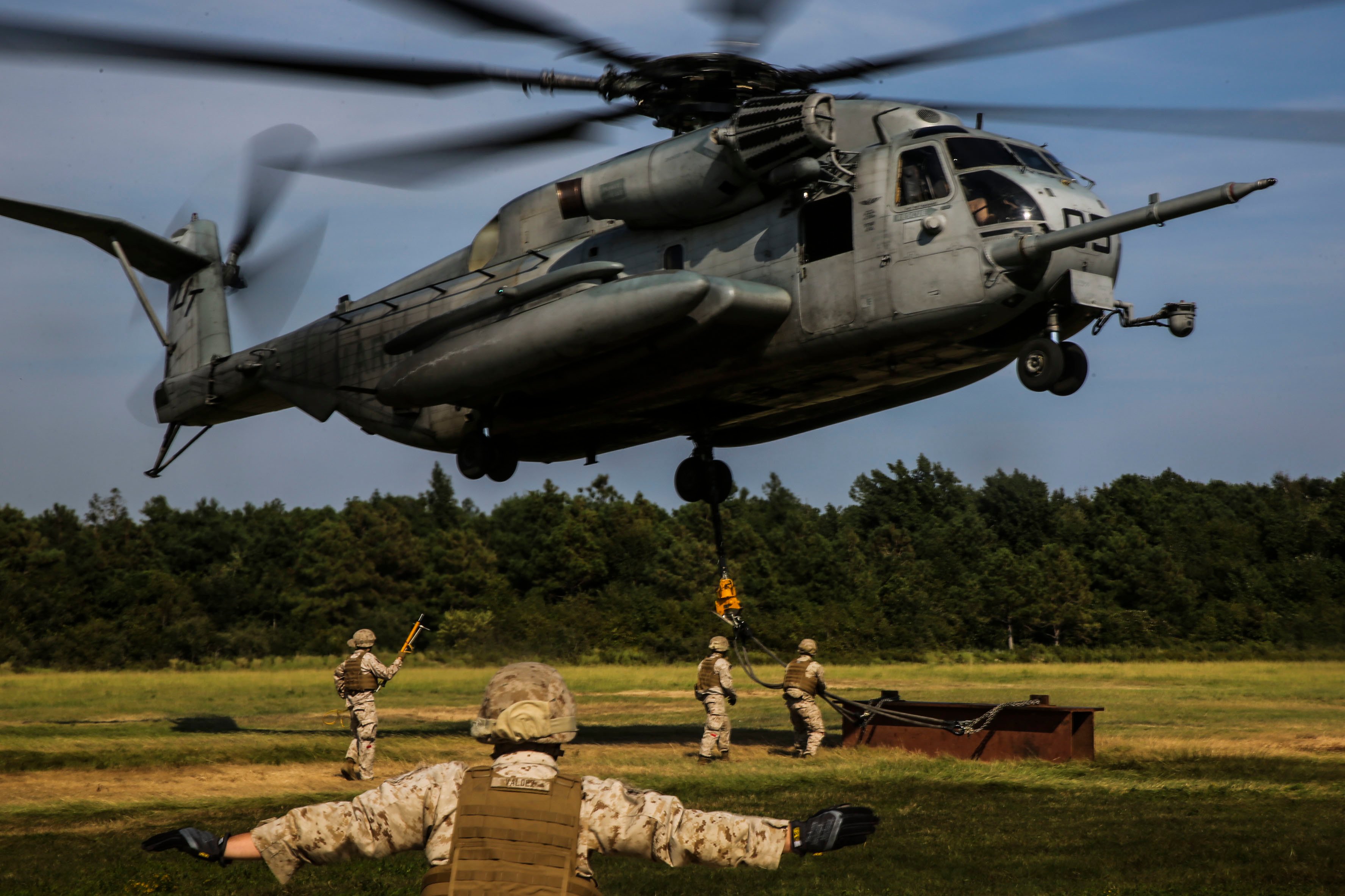
This article is part of a two-story package on the current state of Marine Corps aviation. Please read 3rd MAW Preparing To Deploy F-35B While Struggling To Keep Older Planes Ready: An Operational Perspective for the operational perspective.
The Marine Corps is getting back to the basics to solve its aviation readiness problems, with a focus on contracting for spare parts and enhanced training for aircraft maintainers at the heart of several type/model/series’ readiness recovery plans, the deputy commandant for aviation told USNI News this week.
Each type of plane in the inventory has its own reasons for a declined state of readiness – some have been flying since the early 1980s, some are new but have been “loved to death” since being fielded, Lt. Gen. Jon Davis said in a May 10 interview. But the Marine Corps set up independent readiness reviews for each aircraft type and is in various stages of implementing those plans to boost flight line readiness and increase the number of flight hours per month pilots can fly while training at home.
In the course of crafting these readiness recovery plans, Davis said two cross-platform ideas emerged that should set the Marine Corps up for long-term success: a new focus on contracts for spare parts, and a new Maintenance Training Instructor (MTI) program that is run in conjunction with the Weapons and Tactics Instructors (WTI) course at Marine Corps Air Station Yuma, Ariz.
Davis said the Marines had a serious problem with “not mission capable- supply” status in several platforms, meaning aircraft were grounded because maintenance couldn’t be performed due to a lack of available spare parts.
“I think we should have a target of zero, but the Department of the Navy standard is 10 percent,” Davis said. He said the AV-8B Harrier fleet, prior to implementing the readiness recovery program, was “ running in the 20s, 22 to 25 percent for those airplanes, so lots of swapping of parts, lots of broken airplanes on the flight line. So [we] focused on non mission capable- supply, fixing those things.”
The CH-53E heavy-lift helicopter and the MV-22 Osprey had similar rates of not mission capable- supply, he added.
To address this problem, Davis said the Marine Corps now has contracting officers working closely with the Navy supply community and the Defense Logistics Agency (DLA), and those officers are personally accountable for maintaining a proper flow of spares.
“So now I’ve got majors down at Richmond at DLA that are focused on Harrier, that are focused on 53, that are birddogging those parts like, hey, this contract, we’re shy of these parts, where are they?” he said.
“And instead of just kind of looking at something in the aggregate, you’re now responsible for that airplane, getting the parts for that airplane.”
The service is also looking for inefficiencies in existing contracts that can be ironed out, as well as improvements to the flow of parts – to avoid scenarios where spare parts stack up at loading docks but don’t make it to aircraft maintainers in a timely fashion.
Separately, the Marine Corps set up the MTI course at Marine Aviation Weapons and Tactics Squadron 1 (MAWTS-1) in Yuma – an idea first proposed nearly 40 years ago.
Davis said MAWTS-1 was created in 1978 based on a Marine aviation study ordered by former commandant Gen. Louis Wilson, questioning whether the U.S. Marine Corps was prepared for the type of high-end aviation war Israel had to conduct in the 1973 Yom Kippur War. Wilson thought “we’d probably get our rear ends handed to us,” Davis said, and ordered the creation of a single standardized schoolhouse for training and tactics – called Project 19 in the study. Project 21, a standardized schoolhouse for the aircraft maintainers, was recommended in the same study but was never created, until now.
During the independent review of the aviation readiness shortfall, a retired female Air Force general from the logistics community noted that Marine maintainers weren’t spending enough time each month actually touching their airplanes.
“She was Air Force so she kind of thought it was, well maybe they’re out doing PT or getting a haircut,” Davis joked, but the conversation led to the realization that the air stations were densely filled with maintainers, but those maintainers weren’t spending a sufficient number of hours actually doing hands-on maintenance.
The service has since sent its maintainers to Air Force schools, British military schools, and even to FedEx schools to see what tools and training the maintainers there are given, Davis said, and the MTI course will pool all these lessons learned and “train the trainers” to go back to their squadrons and disseminate these new best practices.
“Let’s go make maximum readiness out of every airplane we own, and part of that starts with having the proper amount of spares on the shelf, and highly trained Marines working on the airplanes,” Davis said.
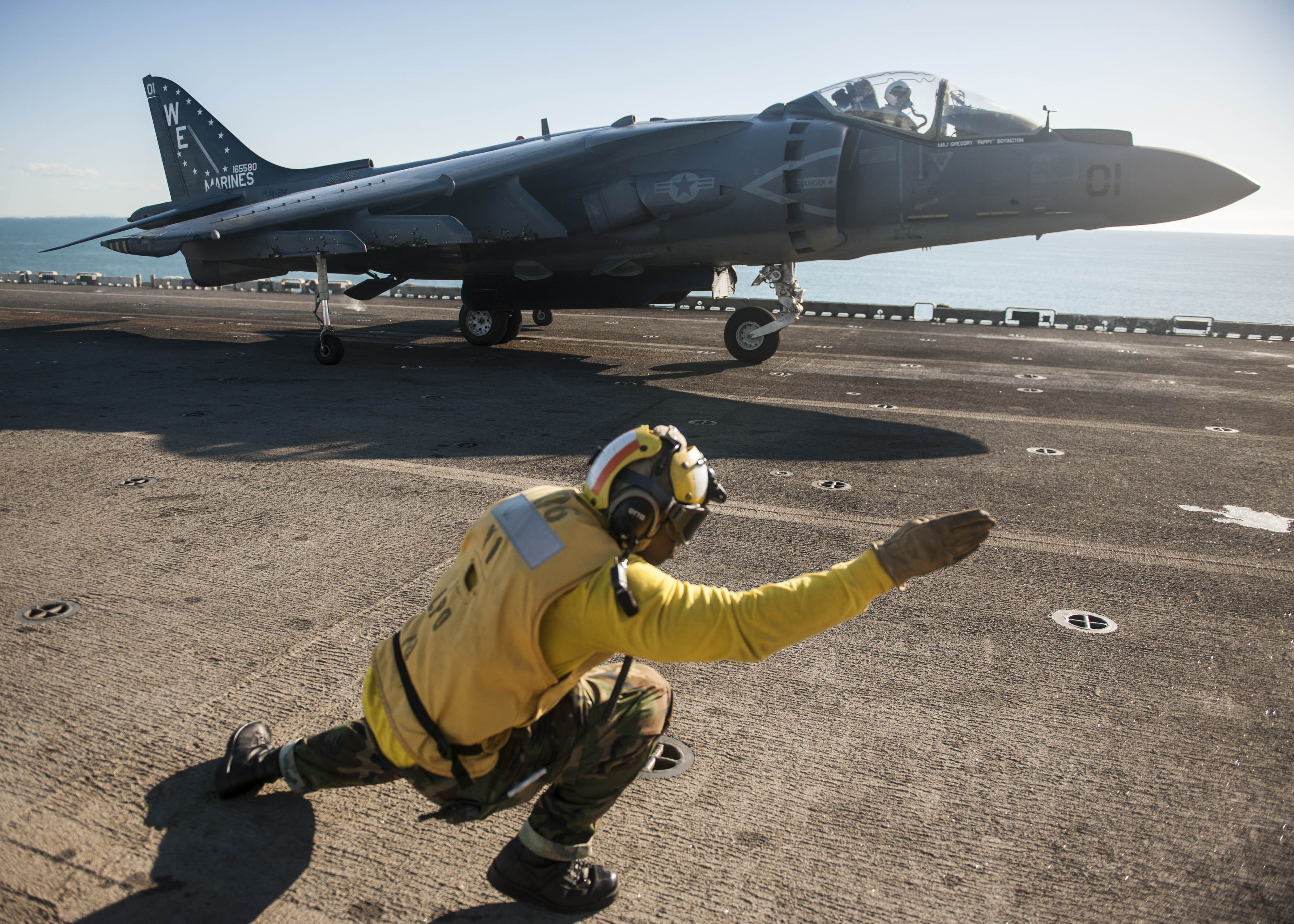
Harriers
The Marine Corps tackled its Harrier readiness problem first. In the summer of 2014, when the independent readiness review started, the service had only 48 Ready Basic aircraft in its gun squadrons – not including planes for the training squadrons – and the independent review determined the Marine Corps would need 66 Ready Basic aircraft to meet its flight hour goals for Harrier pilots.
After beginning a two-year readiness recovery plan in January 2015, “we’re at 61 Harriers today, so we are executing our plan with great help from Congress and a very measured approach to how we’re doing business,” Davis said, adding the service is on track to reach 66 within the two-year window.
Today pilots are flying 15.4 hours a month with 11 Ready Basic aircraft in each squadron, and they’re on a path to get to 16 hours a month with 12 ready aircraft per squadron, thanks to the Marine Corps implementing 84 actions in the readiness recovery plan – most of them related to ensuring the right spare parts are available to fix planes as soon as they go down, he said.
In fact, the plan is going well enough that the Marines may hang on to some of the Harriers a bit longer than planned, allowing the service to transition some F-18 squadrons to F-35B squadrons ahead of schedule to compensate for the severe readiness problems in the Hornet community, Davis said.
“We will probably slow down the Harrier transition a little bit and emphasize F-18,” he said, noting that the Marine Fighter Attack Squadron (VMFA) 122 Hornet squadron’s transition has been accelerated.
“We have a decision point in 2019 to say do we want to change it up some more? So we have the flexibility inside the Marine Corps to change up the transition schedule” as conditions in the legacy tactical air community dictate.
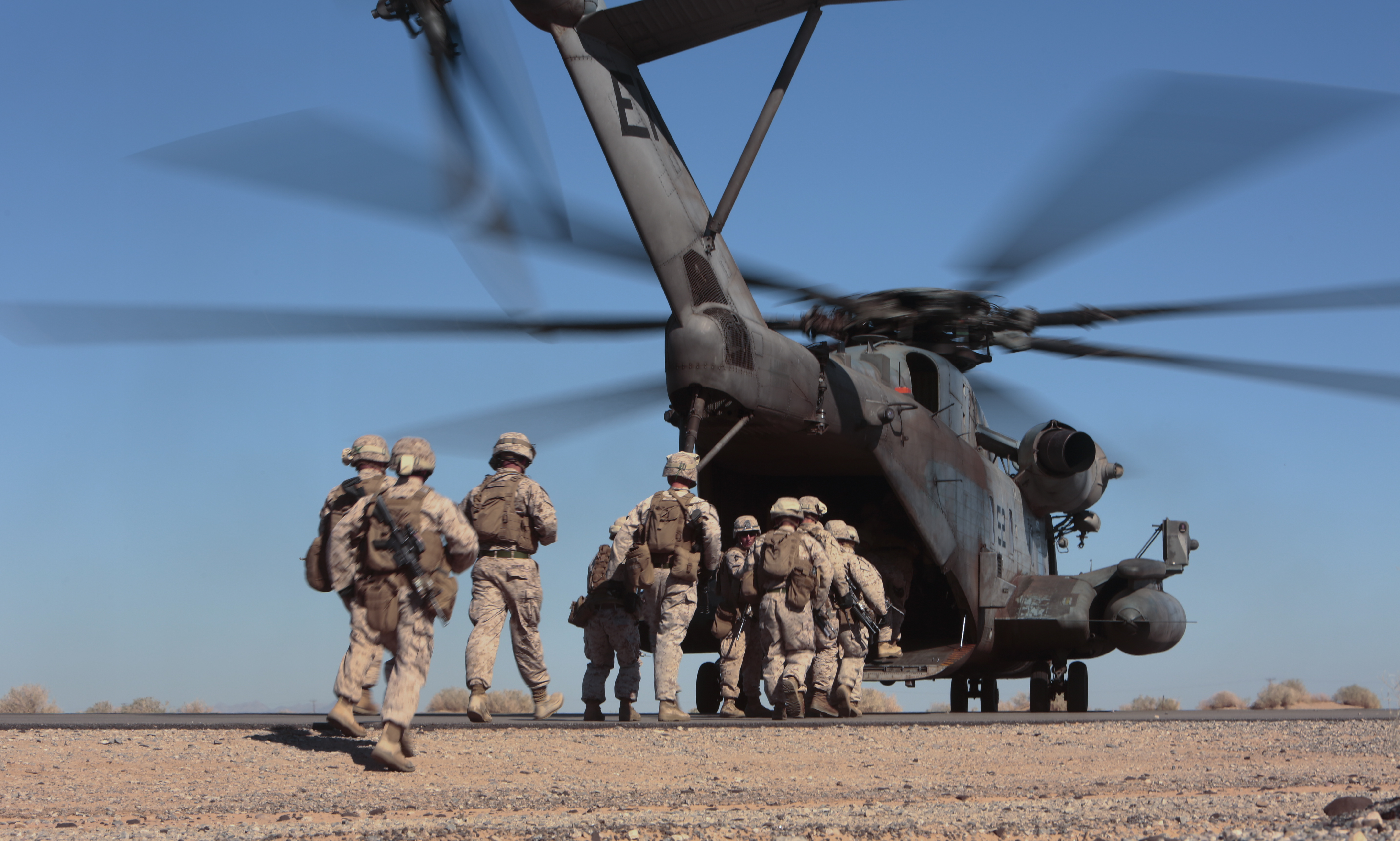
CH-53E
Compared to the Harriers, where the primary challenge was a logistics chain that couldn’t keep up with aging platforms, the CH-53E helicopters presented “a more in-depth problem,” Davis said.
Of the 147 helicopters the service owned, only 38 were ready to fly when the independent readiness review started. The review not only showed the need to address the not mission capable-supply challenge, like with the Harriers, but also pointed to the need to reset the helicopter fleet – giving the aircraft new fuel lines, hydraulic lines, wiring and more. Davis said the reset program will take off any parts that are in bad condition or too old and replace them with brand new parts, restoring the helos to a high-reliability flight ready standard.
The first beta test aircraft just came out of reset and looks much better than before, Davis said. Sixteen more helos are headed into the reset program now – seven at Marine Corps Air Station New River in North Carolina, seven at MCAS Miramar in California and two at MCAS Kaneohe Bay in Hawaii.
Davis said the reset takes 110 days and costs about $1.2 to $1.5 million per helicopter. He said the Army put its helicopters through a reset of similar cost and duration and has seen mission capable rates of 75 percent or better since, which he hopes the Marines will also achieve.
Today, CH-53E pilots should be flying 17 hours a month and are only flying 11.7 – which is up from 8.6 hours three months ago.
“Three hours more is good, I am slightly happy,” he said.
“They need their hours out there that they’re supposed to have. They’re safe now, but we want them to be tactically and technically proficient.”
The improvements already seen have largely come from addressing spare parts, and as helicopters go through the reset program the numbers should get much better – instead of today’s 52 ready aircraft, in 110 days there should be 68, and so on as the reset continues. Under the readiness recovery program, the CH-53E fleet should hit full readiness by 2019 – around the time the replacement CH-53K should hit the fleet.
Davis said the new heavy-lift helo is doing well in testing now, and “our plan is to make the Echo healthy so we don’t have any gaps in our warfighting requirements, so the K can come in and do an easy transition as compared to the one we’re doing right now with TACAIR, which is hard,” he said of the scramble to field F-35Bs to replace the F-18s.
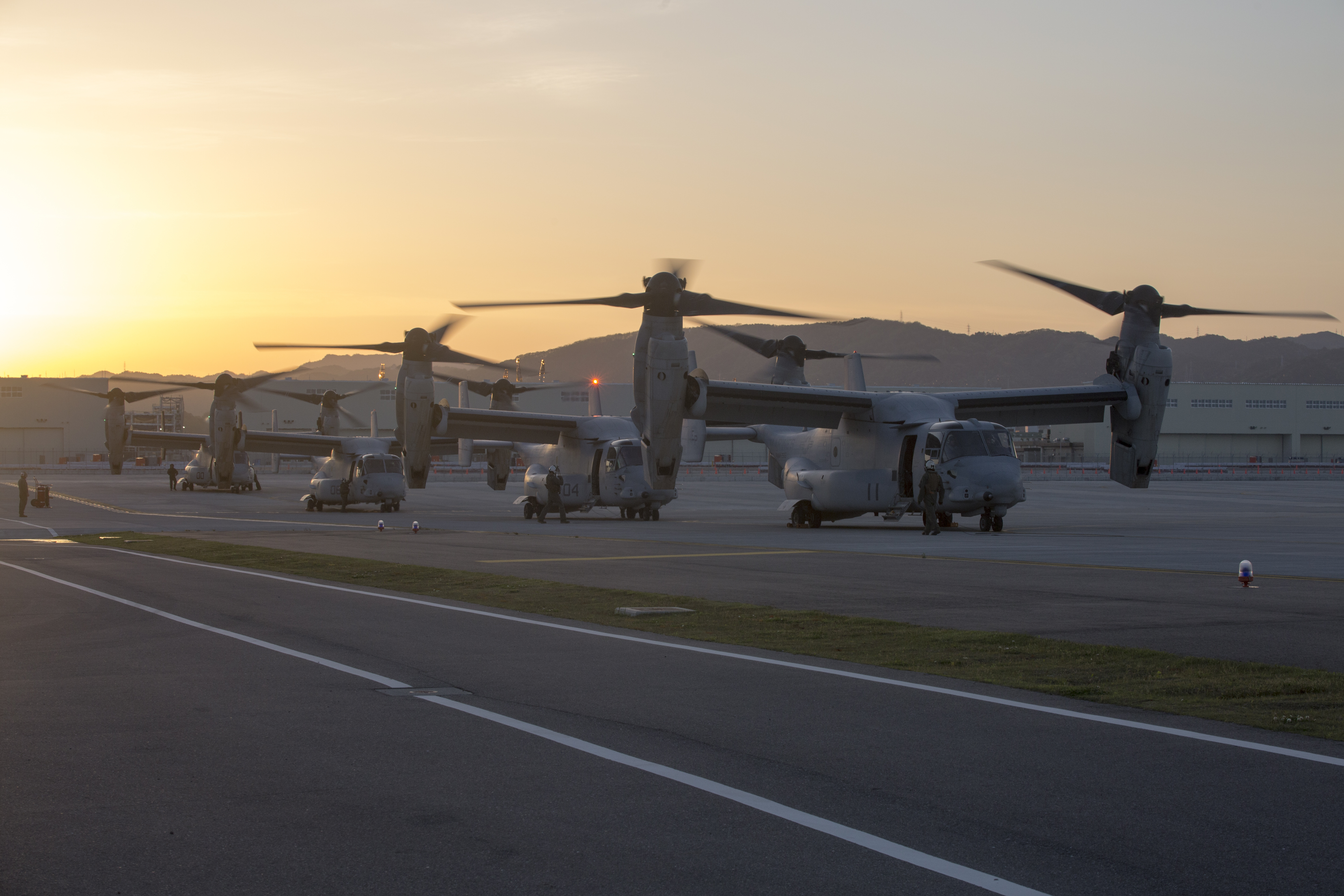
V-22
Next in line for readiness recovery is the V-22 Osprey – which reached initial operational capability only nine years ago but is “the most in-demand airplane in the world, and we’re loving it to death.”
Davis said this fleet has been operating at surge capacity since it was fielded and shows no sign of slowing down. Readiness has degraded because the tiltrotors are being used faster than ready forces can be generated. In theory, for every V-22 squadron deployed in a Marine Expeditionary Unit, one is just getting home and another is training to go out next. With three MEUs out at any given time, the Marines would need nine squadrons to sustain this 1:2 deployment-to-dwell ratio.
However, the V-22s are now also used in land-based Special Purpose Marine Air-Ground Task Forces (MAGTFs) in U.S. Central Command and U.S. Africa Command – meaning five squadrons are deployed and 15 would be needed to sustain.
“I’ve got 14. For a long time I had 13,” Davis said.
“So what that means is, we were moving maintainers from unit to unit to unit. Our [deployment] tempo is 1:2, or less than 1:2 in V-22. Going aboard the ship, going to Special Purpose MAGTF, basically we have no breathing space for our pilots or our maintainers in V-22. We have been at surge since 2007. … The airplane’s been incredible, just been incredible, but we’re basically outstripping our ability… to sustain it with spare parts and train the maintainers.”
The deployment tempo has not only taken its toll on the planes themselves, but also the personnel. There are no V-22 captains at the Expeditionary Warfare School and none serving as forward air controllers – both great career advancement opportunities – because they’re so busy operating at a surge rate.
The Defense Secretary recently approved a decision to cut the number of V-22s in the Special Purpose MAGTF- Africa from 12 to six, as well as cutting the number of C-130Js from four to two, giving the Marines a little more capacity for proper training at home.
“They’re still standing up squadrons and trying to make a move to Hawaii and everything else,” Davis said of the V-22 community.
“So we’re going to pull back a little bit from our overseas commitment in order to plus-up our training base and basically give us some breathing room.”
Any emerging requirements that can’t be met by the half-sized Osprey squadron in the Special Purpose MAGTF would be taken on by the nearest MEU, he said.
The service is still developing its V-22 readiness recovery plan now and will implement changes as needed, Davis said, but he’s optimistic that a slower operational tempo will help. Marine Helicopter Squadron (HMX) 1, the presidential helicopter squadron, is prioritized for obvious reasons. It has a stable base of maintainers with a stable workload, and it gets all the spare parts it needs in a timely fashion. As a result, HMX-1 had a 94 percent readiness rate over the last six months and only a 2.6 percent not mission capable- supply rate – a tenth of what the rest of the V-22 fleet saw – showing that the planes work just fine when properly cared for.
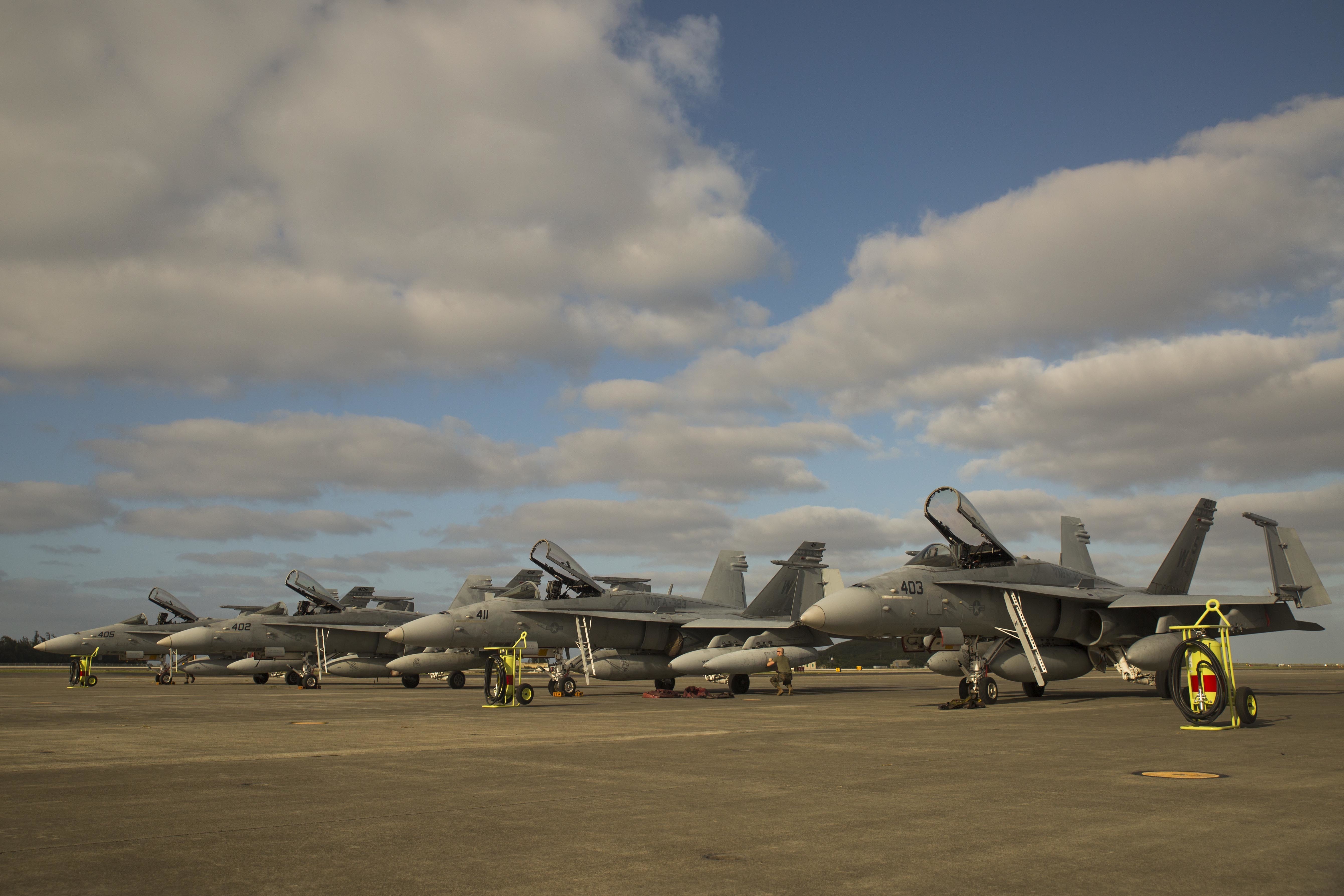
F-18
The Marine Corps’ challenge with the Hornet fleet is unique. It is the biggest user of the legacy Hornet – the Navy is using its newer Super Hornets while the older planes are stuck in a depot logjam, whereas the Marine Corps is just not meeting its flight hour goals. The Navy and Boeing are working hard on the depot side as the legacy planes go through a Service Life Extension Program (SLEP), and with depot productivity up “now it’s about just kind of burning through the backlog,” he said.
“We’re just shy of what we need to be producing out of the depots to do that, but I’m not sure that throwing any more money at the depot is the answer to that, we’ve just got to encourage them to do good work and to basically make their gates,” Davis said.
“But also too the answer for the Marine Corps to the readiness challenge inside TACAIR is, we have some really old airplanes” that average 26 years old and have “some life left in them but not a lot, so the answer is to recapitalize with F-35 as quickly as we can.”
VMFA-121 is already up and running, with VMFA-211 standing up next month and VMFA-122 next after that. VMFA-314 will then become the Marines’ first F-35C carrier variant squadron. Though the squadrons have been slow to stand up so far, they will begin transitioning faster.
“We are going now from I would say is a very anemic production ramp rate on the F-35 to a healthy ramp rate. Could be healthier, but between 20 and 24 airplanes a year for both the F-35B and C – and all the Bs go to the Marine Corps – so that’s in excess of two squadrons a year that we can stand up and get going. So real goodness there,” Davis said.
That rate will “allow me to shut down F-18 squadrons faster” and “get out of the old metal into the new.”
Davis has said since before the Marine Corps declared initial operational capability on the F-35B that the biggest challenge would be spare parts and maintenance, and he said he’s paying close attention to that supply logistics chain to avoid the problems plaguing the rest of Marine aviation.
As for the maintainers, he said there’s a lot of excitement today about the F-35 transition and “right now we have just an exceptionally well trained F-35 fleet of mechanics. They are world-class. I’m going to go out of my way to retain them.”





